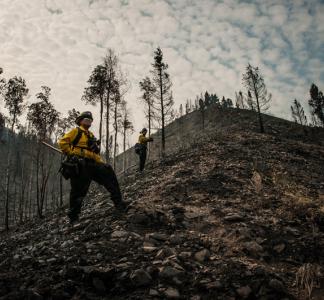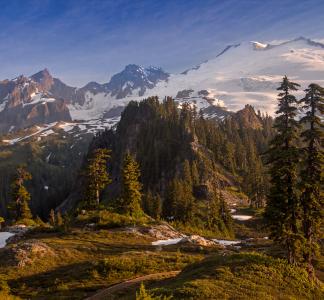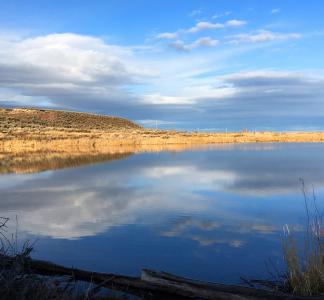Zach Bright
Logging and the Pacific Northwest’s forests
Oregon and the entire Pacific Northwest are known for big, lush old-growth forests. These forests are beloved by local communities and needed by wildlife like salmon and northern spotted owls. But over the years, they’ve also drawn timber companies, leading to destructive “clear-cut” logging in many places.
Today we have the opportunity to correct that by ensuring plans that guide the management of these forests are balanced and don’t prioritize logging over clean drinking water, wildlife habitat and outdoor recreation.
Federal agencies are updating a region-wide management plan for these forests. The Northwest Forest Plan was originally developed in the 1990s to set a road map for the restoration and protection of old-growth forests while eliminating clear-cut logging. We’re working to ensure new plans build on that framework to protect rivers, ancient forests, wildlife habitat and the recreational opportunities that millions enjoy.
The famous forests of Oregon and the Pacific Northwest are intimately connected not only to the identity of local communities, but to the health of waterways and the broader ecosystem. Bears, elk, northern spotted owls and populations of spawning salmon all rely on these forests.
The threat
The same wild old-growth forests that capture the imagination in Oregon and throughout the Pacific Northwest also drew timber companies here in the 20th century. By the 1990s, these companies had logged countless 100-year-old trees, clear-cutting many forests and seriously endangering habitat for many species.
In 1994, the Northwest Forest Plan was put in place to protect and restore old-growth forests in Western Oregon and throughout the region. Under the plan, roughly 25 million acres of forest are protected from destructive clear-cut logging and managed as part of an ecosystem that stretches from Northern California to the Canadian border.
But that plan is being revised and there is a danger some agencies will decide to prioritize logging over conservation, without giving enough attention to protecting drinking water or other needs. We’re working with agencies to be sure they develop a plan that favors conservation and sticks to what made the old plan a success.
What we're doing
-
Fostering a plan that protects forests
We’re encouraging the Forest Service and BLM to collaborate on a new Northwest Forest Plan that recognizes the value of the entire region and protects clean water, old growth forests and recreational opportunities that millions enjoy.
-
Bringing science and public opinion to the table
We’ve conducted scientific research and opinion polling to support plans to manage Pacific Northwest forests that prioritize clean water and protection of old-growth forests.
-
Making space for recreationists to be heard
We’re working with hikers, mountain bikers and others who love outdoor recreation to ensure their voices are heard as the Northwest Forest Plan is updated.



